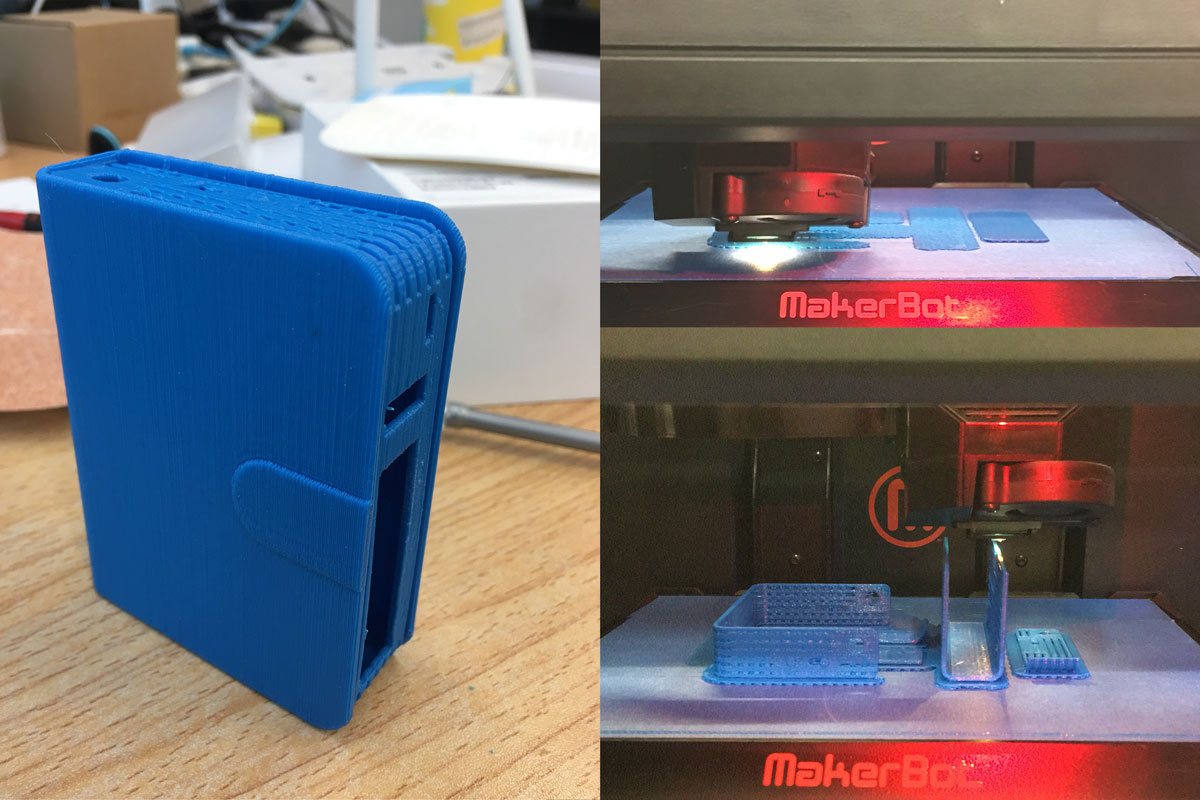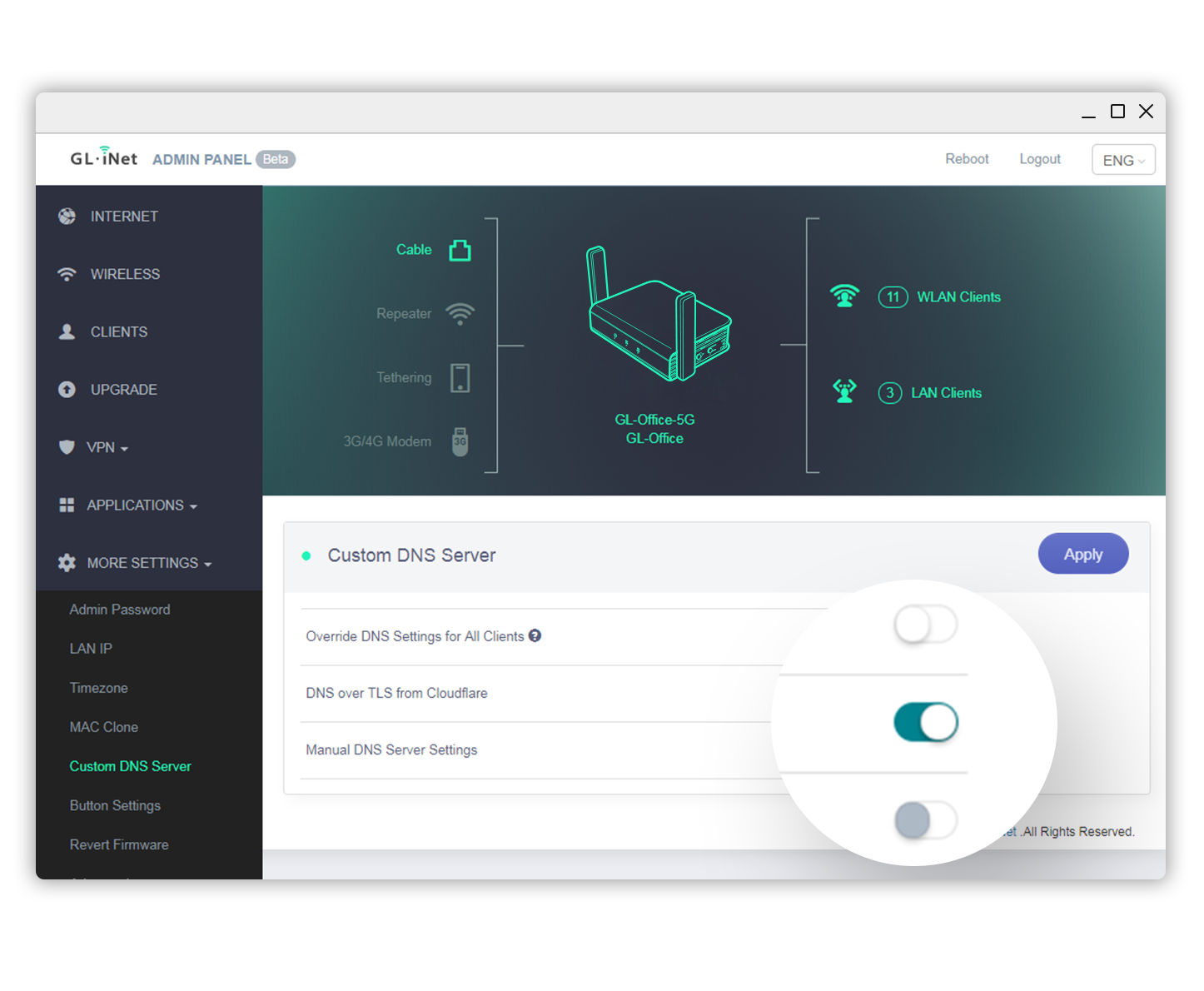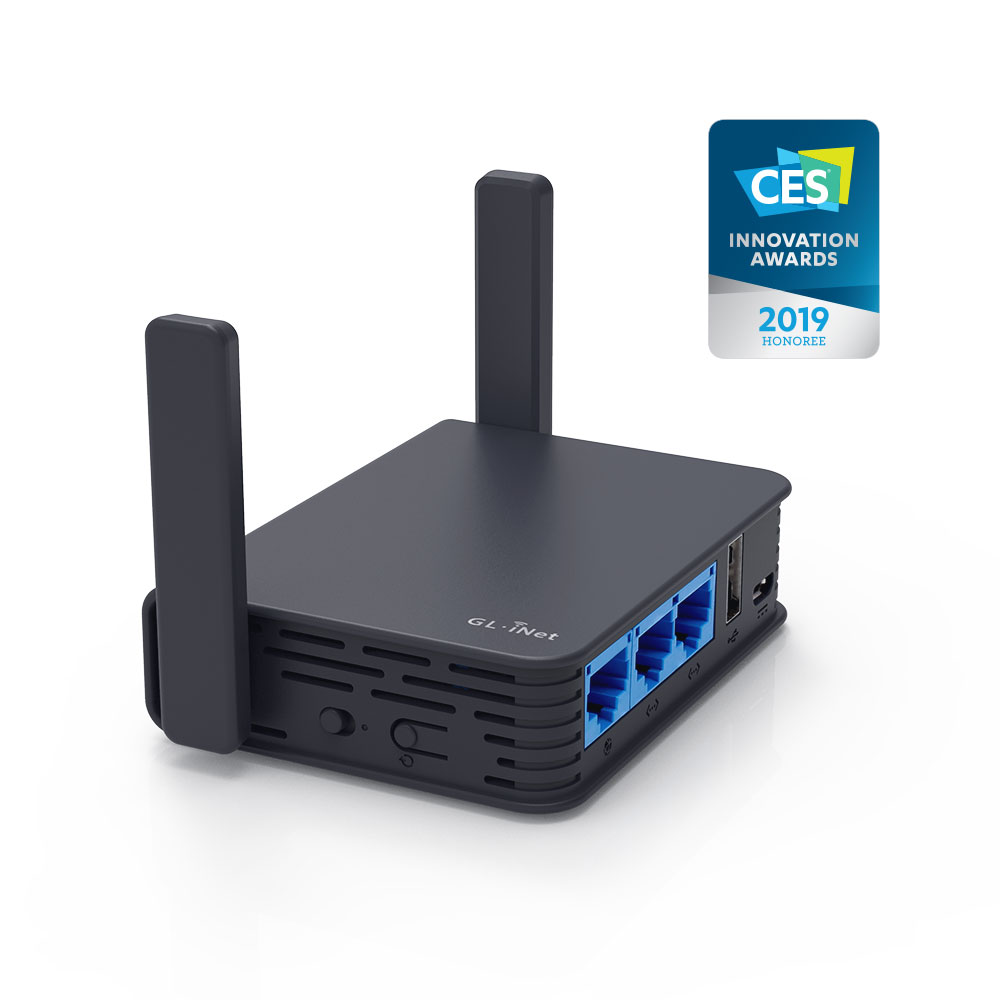Slate
If you’re a frequent traveler, you know that it’s often necessary to use WiFi in public places. The airport, the hotel, the café, sometimes you have to take what you can get! The problem with public WiFi (other than its unreliability) is that you are inviting a whole host of different security risks.
GL.iNet Slate is a gigabit wireless router built with open technologies to make sure security-savvy users have choices to secure their awesome Internet experiences, anywhere and anytime. It has been selected as a CES 2019 Innovation Awards HONOREE in the Cybersecurity and Personal Privacy product category.
"This device (GL-AR750 router) has 100M Ethernet ports. It will only connect at 100M line rate when connected to a gigabit port."
by David, product reviewer on Amazon.com
We launched Creta (GL-AR750) travel router on August last year and listed it on Amazon in later October. It was not a very successful product design and it received many critical reviews. David rated the product for only two stars with thousands of words of review. Because his review keeps being the top review on our Amazon product page and it gets many upvotes. As a result, we decided to upgrade the product to a new model: GL-AR750S.
I polled on Twitter to ask our followers what features did they want. We got 11 responses and most of them voted for the option of Gigabit Router. The second popular option was having external antennas. I also talked to the users online in order to get more feedbacks and put them into the consideration of making the upgraded version. I designed the look and feel of Creta, and changed it for Slate based on customers' feedbacks.
We're thinking of upgrading GL.iNet GL-AR750 router in the near future. Please let us know your needs! #OpenWrt #opensource #hacking #IoT #OpenVPN #WiFi #ODM #OEM
— GL.iNet (@GLiNetWiFi) February 4, 2018

"If a picture is worth a thousand words, a prototype is worth a thousand meetings."
by Quinn Huffstetler, Prototyping: the lost art of Industrial Design
I was very new to industrial design and it was my first project to try a 3D printing for a product I designed. I drafted the 3D model in Rhino 3D and rendered some 3D modeling photos to demonstrate to my team. I didn't think a transition from loose hand drawings to high fidelity computer renderings would be enough to define my design. The practice of validating my idea through physical prototyping of 3D printing in a lab was a better choice. Later, we created several prototypes to explore new opportunities and problems for further refinement.

The process of finalizing the look of the Slate router
"Slate Has An Incredibly Small Form Factor. It has the approximate dimensions of a credit card, and can easily fit in your pocket!"
by Bashir, techgeek365.com
Bashir is a tech reporter who writes for online blogs. He published an article about the Slate router on techgeek365.com, which is a unique tech blog about technology, social media, mobiles, gadgets, entrepreneurship. His article boosted online impressions of Slate and brought more people to get to know Slate during the early bird event of the product. I followed up on his review writing and other media writing things after our digital marketing manager left.

"The folks at GL.iNet read that blog post and decided to bake DNS-Over-TLS support into their new router using the 1.1.1.1 resolver, they sent me one to take a look at before it's available for pre-release. "
by Junade Ali, Lead Support Operations Engineer at Cloudflare
I paid attention to user feedbacks, especially the opinion leaders. Then, I worked with our engineering team to integrate the features they want into product design. For instance, Cloudflare DNS over TSL, which is a security protocol for encrypting and wrapping Domain Name System (DNS) queries and answers via the Transport Layer Security (TLS) protocol to prevent eavesdropping and manipulation of DNS data via man-in-the-middle attacks.

Cloudflare DNS function is integrated into Slate
Wrote a post on the @Cloudflare blog on how you can get OpenWRT (LEDE) to support DNS-over-TLS and encrypt external DNS queries by replacing Dnsmasq with Unbound. Done on a @GLiNetWiFi GL-AR750: https://t.co/xcJDHc1mVr
— Junade Ali (@IcyApril) April 9, 2018
DNS-Over-TLS Built-In & Enforced - 1.1.1.1 and the GL.iNet GL-AR750S - @IcyApril - https://t.co/NJZlbwaOCP pic.twitter.com/xh8dFwyLDX
— Cloudflare (@Cloudflare) July 16, 2018
"OpenWRT provide many functionalities but it maybe a little too complicated for everyone. GL.iNet provide on Slate a simplified GUI with essential functionalities available."
by Marc, product reviewer on Medium
I designed the UI/UX design of web admin panel for GL Linux based networking products when they upgrade to the third generation of firmware. To adapt to different screen sizes, I devoted time to refine the responsive interface and mobile-friendly experience. I also worked with front-end engineers to ensure the functional consistency and underlying implementation consistency across devices.
"One of the best sources for user-generated content is an unforgettable unboxing experience."
by thegood.com
The unboxing is the act of opening a package and showing the world what’s inside, therefore, it's very important in user experience of consumer products. When I designed the packaging, I was thinking of how to make users enjoy the ownership of Slate router. A mysterious dark box wrapping with irregular shaped belly-band is the final packaging design for Slate router. I worked with the junior design to simplify the setup guide by starting with "Let's get started“. Many users enjoyed the unboxing and shared on social media with photos.
Slate gigabit with security-savvy travel router#gl-inet #privacy #VPN #dnsovertls pic.twitter.com/eO98rbfi59
— Oo Kang Zheng (@ookangzheng) August 8, 2018
Oooh... look what turned up today. I’ll have a play with this @GLiNetWiFi bad boy and let you know how I get on later 😎 pic.twitter.com/0EKdZs0HoV
— Luke Mahon (@Tech_Gent) August 14, 2018
@GLiNetWiFi Thanks for the quick delivery, #Slate router is on my desk now 😀🤩 #earlybird pic.twitter.com/4xbQ4WqSVq
— Geooooorge Wang (@cafebug) August 2, 2018
Other Design Things...
Mobile App for GL Routers
I made some prototypes and mockups for a mobile app for users to use 25+ VPN service on GL routers with their phone. Engineers need to integrate the app with a cloud platform, therefore, the app is still under development.
Landing Page
I created a landing page for the new router Slate to demonstrate how it will benefit users.

